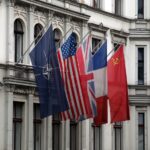In the realm of international relations, power dynamics dictate the ebb and flow of global politics. Central to these dynamics are the concepts of soft power and hard power, each instrumental in shaping a country’s influence on the world stage.
Defining the Power Duopoly
Understanding the essence of both power forms is crucial.
- Soft Power: The ability to shape preferences and influence others through attraction and persuasion, typically without the use of force or coercion. It encompasses cultural appeal, values, and foreign policy that is seen as legitimate by others.
- Hard Power: The use of coercive methods to get others to change their position. This includes economic inducements, sanctions, and military interventions.
Tools of Soft Power
Several facets work in tandem to craft a country’s soft power allure.
- Cultural Diplomacy: The global appeal of one’s culture, traditions, and values. For instance, Hollywood’s influence for the U.S. or anime and manga for Japan.
- Education: The allure of educational institutions and international student exchanges.
- Global Development Assistance: Aid programs and humanitarian efforts bolstering a nation’s international image.
Instruments of Hard Power
Hard power is more tangible and direct in its approach.
- Military Might: A nation’s defense capabilities, military alliances, and potential for intervention.
- Economic Leverage: The use of trade barriers, economic sanctions, and financial muscle to induce changes in another country’s behavior.
Balancing Act in Geopolitics
Countries often juggle between these power forms, crafting a bespoke diplomatic approach.
- The U.S. Approach: While globally recognized for its military dominance, it equally harnesses Hollywood, universities, and Silicon Valley as soft power instruments.
- China’s Strategy: Apart from its rising economic clout, initiatives like the Confucius Institutes globally aim to spread Chinese culture and language.
The Pros and Cons
Both power types come with their advantages and drawbacks.
- Soft Power: While cost-effective and less confrontational, it’s slow to yield results and can be ambiguous.
- Hard Power: Offers direct influence but can lead to resistance, strained relations, and potential escalations.
The Digital Age and Power Dynamics
Technology has introduced a new dimension to this age-old debate.
- Cyber Power: From cyber warfare to digital propaganda, the online realm offers new tools for coercion and persuasion.
- Digital Diplomacy: The use of social media by countries to shape narratives and bolster their global image.
Case Studies: Modern Conflicts
Contemporary global issues often see a mix of both power forms.
- North Korean Denuclearization: Features a blend of economic sanctions (hard power) and diplomatic negotiations (soft power).
- Climate Change Agreements: While nations are persuaded by the global need (soft power), there are also financial incentives and sanctions at play (hard power).
Future Trajectories
As the world becomes more interlinked, the dynamics between soft and hard power will continually evolve.
- Collaborative Efforts: Global challenges like pandemics may necessitate a blend of both power types, with nations leveraging cooperation over coercion.
- Shifts in Global Centers: Emerging powers might lean more on soft power as they seek a non-confrontational rise on the global stage.
Conclusion
The interplay between soft power and hard power is a dance of diplomacy, strategy, and national interest. While each has its place in the international arena, a harmonious blend tailored to specific contexts often proves most effective in achieving desired outcomes.
In an ever-evolving global landscape, understanding the nuances of these power dynamics is crucial for nations aiming to carve a significant niche in international relations. The adaptability and foresight to wield them appropriately will shape the geopolitics of the 21st century.















